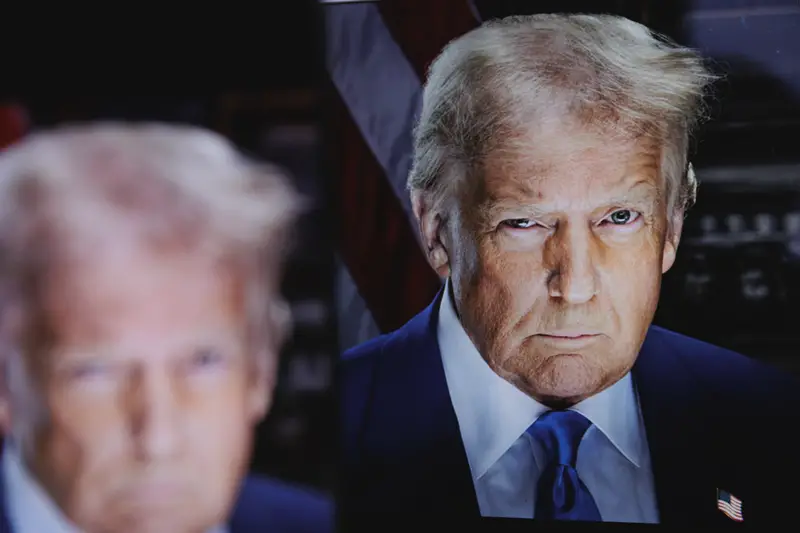President Donald Trump engaged in a verbal confrontation with CNN White House correspondent Alayna Treene during a flagpole installation ceremony at the White House on Wednesday, June 18, 2025. He criticized her network as fake news and questioned the viewership of CNN when Treene attempted to inquire about divisions among his supporters regarding U.S. involvement in the Israel-Iran conflict.
The incident took place on the South Lawn as Trump supervised the installation of new flagpoles at the White House. When Treene began her question by mentioning that some supporters were divided on the U.S. response, Trump interrupted to ask her media affiliation. Learning she was from CNN, Trump dismissed the network as fake news and remarked, “Fortunately nobody watches”.
As Treene continued with her question about supporters’ concerns over U.S. involvement in another foreign conflict, Trump responded with personal attacks, asking, “Do you ever ask a positive question at CNN?” He claimed his supporters are more devoted to him now than during the election and recounted his electoral victory statistics.
The exchange underscored Trump’s tendency to deflect challenging questions by attacking the credibility of news organizations rather than addressing policy issues. This tactic has become a characteristic of his interactions with the media, diverting attention from policy discussions while reinforcing his narrative of media bias.
This confrontation occurred amid growing tensions within Trump’s political base over his administration’s assertive stance toward Iran. Prominent conservative figures, including Tucker Carlson and Steve Bannon, have criticized Trump’s Iran policy, leading to what sources describe as a divide among MAGA supporters. Trump showed particular sensitivity to questions about this division, dismissing the idea of a split among his supporters.
Recent polling data suggests that Trump’s claims of unwavering supporter loyalty may be overstated. Half of Americans polled view Iran as an enemy to the U.S.; 25% consider it unfriendly, and 5% see it as an ally or friendly.
Only 16% of Americans polled believe the U.S. military should intervene in the Israel-Iran conflict, while 60% oppose it and 24% remain uncertain.
Majorities of Democrats (65%), Independents (61%), and Republicans (53%) oppose U.S. military intervention in Iran, contradicting Trump’s assertion that his base unanimously supports his foreign policy decisions.
Trump’s antagonism toward CNN reflects a broader pattern of confrontational behavior with mainstream media outlets. Throughout his current term, he has frequently clashed with CNN reporters, including Kaitlan Collins and Jim Acosta. In each encounter, Trump has questioned the network’s credibility and audience reach, deflecting from the substance of reporters’ questions.
Brian Glenn, a correspondent for Real America’s Voice and partner to Representative Marjorie Taylor Greene, attempted to reframe Treene’s question more favorably for Trump. Glenn suggested that while Trump’s base remains loyal, some supporters are concerned about prolonged military involvement. Trump responded by assuring there would be no long-term war while maintaining his aggressive stance toward Iran.
The White House flagpole ceremony was intended as a symbolic gesture, with Trump announcing earlier that “It is my Great Honor” to announce the installation of two new flag poles, which he stated he financed personally as a gift to the American people.
The exchange with Treene occurred as Trump faced increasing pressure from both sides of his political coalition. Republican hawks urged decisive action against Iran, while isolationist voices within the MAGA movement expressed concerns about becoming entangled in another Middle Eastern conflict.
During the exchange, Trump also highlighted his electoral victory, claiming he won all seven swing states and thousands of districts compared to his opponent’s hundreds. He used these statistics to deflect from Treene’s questions about supporter divisions, suggesting that his electoral mandate supports his policy decisions despite emerging criticism from within his base.
The confrontation illustrated how Trump continues to regard press interactions as opportunities for political theater rather than substantive policy dialogue, especially when faced with questions challenging his narrative of complete supporter unity.











